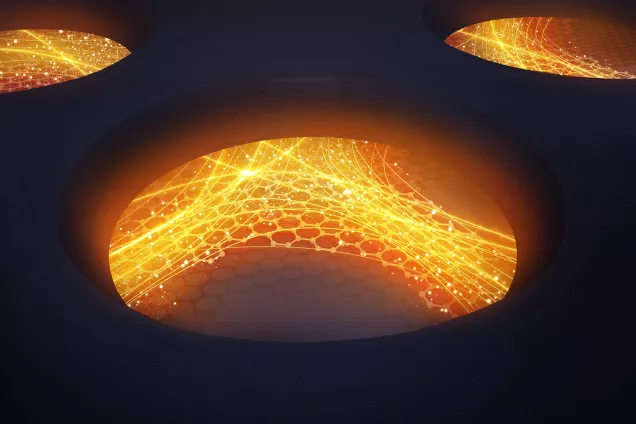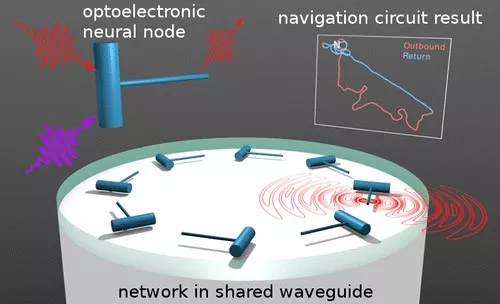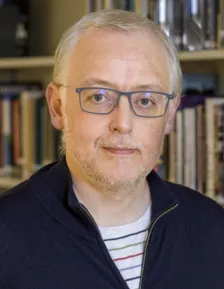The GCN - Seminar - Anders Mikkelsen: Talk abstract and short bio
Anders Mikkelsen, Professor at Lund University and Director of NanoLund will present his research about an artificial neural network that is inspired by the central navigation complex in the insect brain.
This seminar is given in the frame of series that is organized by the three nanoscience hubs located in the Copenhagen-Lund area. The aim is to to increase awareness about our mutual capabilities and to inspire collaborations.
19th March 2021: Anders Mikkelsen (NanoLund): Inspired by insects: Nanoscale systems that sense, think and act
Talk abstract
Nanostructures hold great promise as sensitive and selective sensors for applications throughout society. However, detecting a signal is not enough, it must also be processed and acted upon – preferably locally and energy efficiently without communicating with a distant central computer. Combining a variety of nanostructures into artificial neural networks could accomplish this. But we need well-defined circuit architectures and concepts, with limited size and clear functionality, as a starting point to explore any nanotechnology solution. Interestingly, current insect neurobiology has identified such circuits.
Insects are capable of amazing autonomous feats well beyond current computers, such as navigating across hundreds of kilometres of unfamiliar terrain, using a brain the size of a grain of rice, with only a few drops of nectar as energy supply. One module of the insect brain conserved across species with vastly different lifestyles is the central complex navigation circuit. This has been distilled to its fundamental neuroarchitecture and the function of a number of its components into a biologically constrained computational model [1].
We used this model to explore the potential of neuromorphic nanophotonic computing, which has recently gained much interest [2]. We propose a new concept for creating efficient and fast neural networks where physical interconnects are replaced by light and nanostructured components keeps footprint and energy consumption minimal [3]. Simulations of central parts of the network, indicate feasibility and promise performance orders of magnitude beyond present hardware solutions [3].
From a promising start, we want to expand efforts to design artificial neural networks inspired by neurobiology combined with all of our skills in fabrication and characterization of nanostructures.
Figure: Artificial neural network in which the weighted connectivity between nodes is achieved by emitting and receiving overlapping light signals in a quasi 2D waveguide. Reception, evaluation, and emission of the optical signals are performed by neuron-like nodes constructed from III–V Nanowire optoelectronics [3].
[1] “An anatomically constrained model for path integration in the bee brain”, T. Stone, B. Webb, A. Adden, N. B. Weddig, A. Honkanen, R. Templin, W. Wcislo, L. Scimeca, E. Warrant, S. Heinze, Current Biology 27 (2017), 3069
[2] ”Photonics for artificial intelligence and neuromorphic computing“, Shastri, B.J., Tait, A.N., Ferreira de Lima, T. et al. Nat. Photonics 15, (2021) 102
[3] “Implementing an Insect Brain Computational Circuit Using III–V Nanowire Components in a Single Shared Waveguide Optical Network”, DO Winge, S Limpert, H Linke, MT Borgström, B Webb, S Heinze, A. Mikkelsen, ACS Photon. 7 (2020) 2787
Short Bio: Anders Mikkelsen, Professor, Lund University and Director of NanoLund
Anders Mikkelsen received his PhD degree in Physics from Århus University in 2001. He then moved to Lund and is now Professor at Department of Physics and director of the Swedish Strategic Research Area NanoLund. Anders studies the interplay between function, structure, and growth of nanostructures, from micrometers down to the atomic scale, from seconds to attosecond and moving towards realistic synthesis and device operation environments. The aim is a better fundamental understanding of complex, dynamic condensed matter systems, as well as developing novel materials and devices for next generation computing, energy systems and products improving our lives.
By combining highly controlled building blocks from very different material systems to realize advanced, functional systems, we aim to jointly address challenges that are out of reach for an individual center.

A cluster of groups at DTU involved in nanoscience
Groups at DTU involved in nanoscience are affiliated to the following departments:



